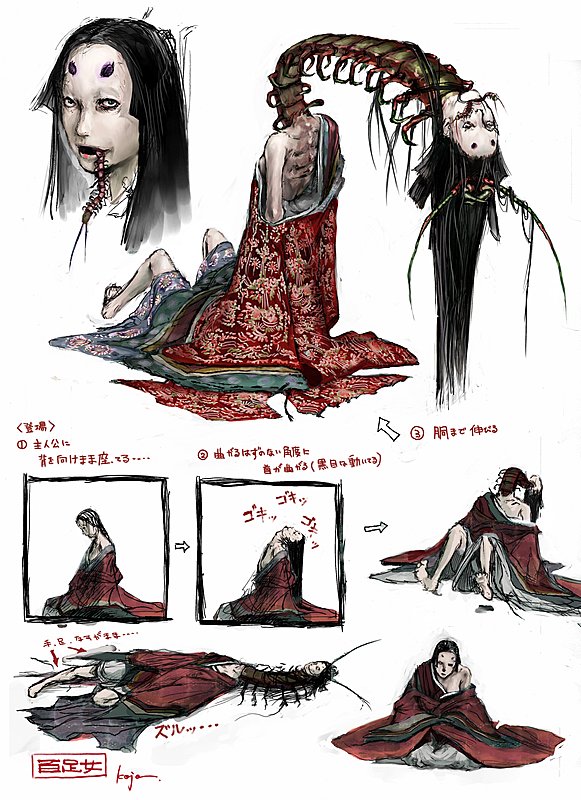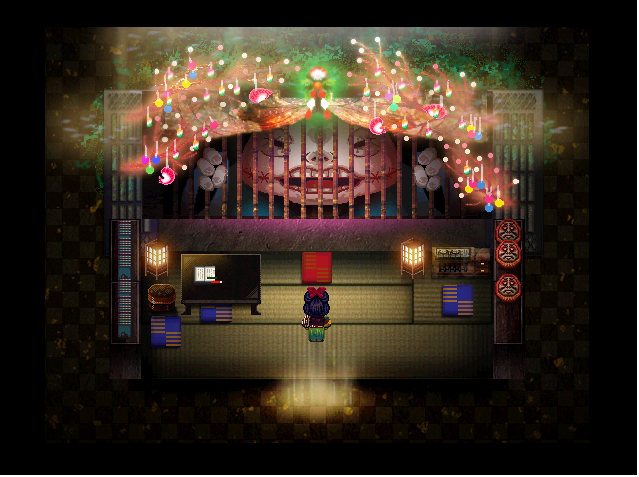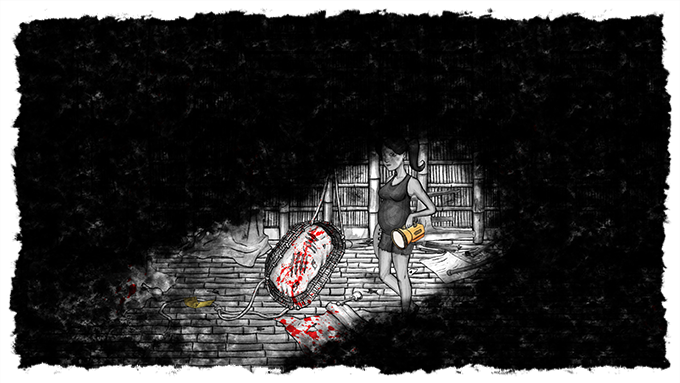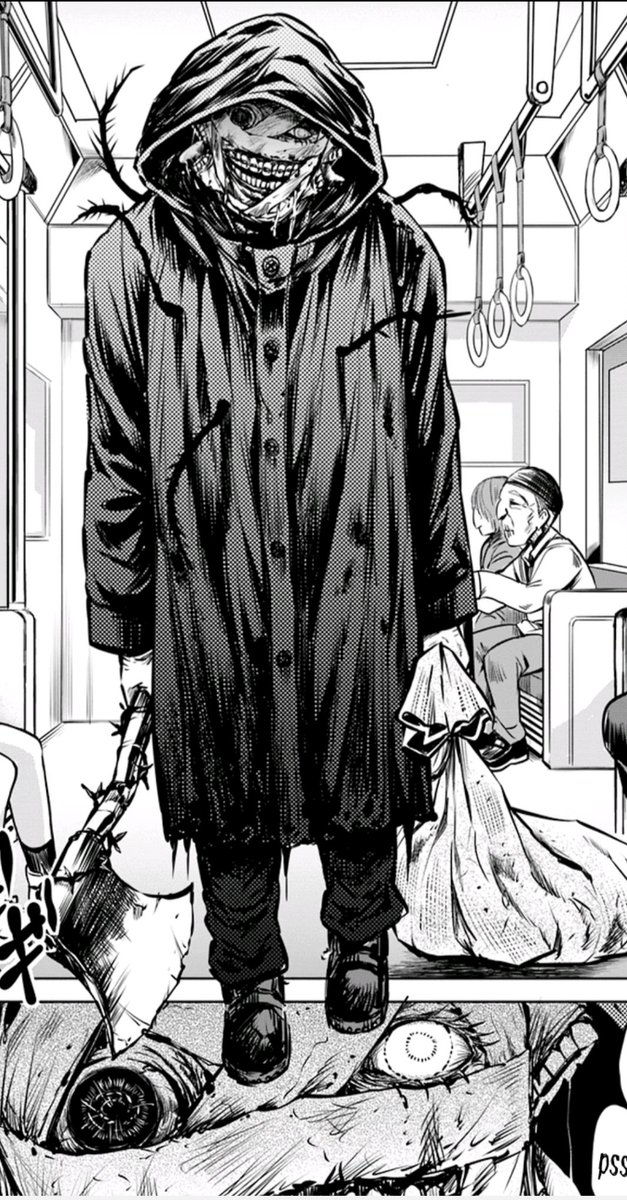Japan was the center of horror games, with masterpieces like Silent Hill or Fatal Frame. In the last years, this rule started to shift, moving toward other Asian countries. Games such as Detention or Dreadout created a new flow of horror games, mostly innovative and surreal, but also specifically rooted in the folklore, the traditions, and the history of their countries. Several Asian horror games started to include elements from their history, folklore or traditions to create a more personalized and rooted experience, mixing the ordinary with the superstition and the fantastic. Of course, one easy way to link horror with the traditions is to use monsters coming from the folklore. It is also thanks to these horror games that a foreigner player would start to fear the Aswang or the bizarre Pocong, or maybe to discover the Hungry Ghost Festival, or how the exorcisms are so different compared to the Catholic’s ones.
In the following article, I will write about the most interesting horror games rooted in the traditions of different Asian countries. The idea would be to include at least one game for each country, but, in some cases, there could be multiple examples, such as for Japan, Indonesia, or Taiwan at the moment. A couple of games are still to be released (or probably never will), but even with this huge limitation, they are the best example to portray the traditional side of their countries. Korea produced several interesting horror games, such as White Day, but they generally lack a strong connection with traditions. Anyway, I plan to update this article in future, including more games for China, Philippines, Thailand, and Korea.
The article is also now available as YouTube video, with similar but also different games in there:
Also if you want to keep updated on games based on folklore around the world, not only Asia and horror, have a look at my STEAM Curator page: Games and Folklore. And just to celebrate, this is the 100th article on Surreal and Creepy!
Check also the new map (made in amcharts) highlighting the countries covered in the article, with the associated games (in blank) and other interesting suggestions.

- Kuon – Japan
Probably very few people know about Kuon, one of the most rare games for PS2. A horror title released in 2004 by Fromsoftware (yes the one of Dark Souls), Kuon is set in ancient Japan. The game is a slow-paced survival-horror, with an incredibly beautiful aesthetic for the time, especially the character costumes. To really understand the plot, it is necessary to play with 3 different female characters, each one with her own story and enemies to face.
Feudal Japan is always a mysterious and interesting place, where a fascinating and beautiful aesthetic, such for example temples and clothes, collides with the blood and the wars, typical of that era. Kuon is set in the Heian Period (from 794 to 1195), an age of mysteries and complex believing, where the influences of the religions and the myths were at their climax. This is the perfect time for a game such as Kuon, where ancient rituals and folkloric monsters are ripping of the austerity of a huge traditional mansion.
Ancient Japan is also combined with dark and esoteric topics, from forbidden rituals, to hideous monsters and arcane magic. Kuon starts with a mysterious and supernatural disease spreading inside the wall of a huge mansion. The inhabitants not only will be horribly slaughtered, but will also transform into monsters. This mystical epidemic is linked with an ancient and forbidden ritual, aiming to achieve immortality through multiple fusion of the bodies and the souls of two living organisms inside a box. I will try to avoid further spoilers, but things will get really creepy in Kuon.
Anyway, Kuon was also a nice inspiration for another Fromsoftware’s masterpiece, Sekiro, and the two games share several similarities. If interested you can find more in my article: Forbidden rituals, giant immortal apes and grotesque centipedes: the connections between Sekiro and Kuon.

- Fatal Frame – Japan
Fatal Frame (or Project Zero in Europe) is one of the best Japanese horror franchise. While Resident Evil is focused on biological nightmares, and Silent Hill on psychological horror, Fatal Frame (FF) searched its comfort zone in creepy fictional Japanese traditions and folklore. Each new installment tells a tale rooted in old rituals and forbidden knowledge, where something got terribly wrong. The main enemies are always ghosts, usually from different historical ages. The main characters are able to defeat these malevolent entities using the “Camera Obscura,” an ancient tool able to exorcise ghosts by taking pictures of them. Each episode is a different story, having in common, other than the camera, ghosts and a forbidden and complex ritual. Even if Fatal Frame is always set in modern times, the atmosphere, the setting, and the plot are always rooted in Japanese traditions.
Labyrinthine and silent mansions, secluded villages engulfed in the woods, or even isolated islands, every location is the perfect scenario for ancient and forgotten traditions. Each episode articulates from the concept of a fictional but believable ancient ritual or ceremony. The folklore surrounding the ritual is always extremely complex, with many figures responsible for different tasks. For example, a group of children in kimono are in charge of crucifying the holy maiden, but only after a group of artists made a tattoo on all her body. The fictional folklore is quite believable, making plausible the possibility that, in an unknown Japanese village, maybe something similar to that truly happened.
Battles are strategic and challenging, with each ghost representing a different battlefield, with its own movements and abilities. Ghosts can fly, pass through the walls, crawl on the ground or even directly run, everything to make the life of the player really difficult. And of course, following them with the camera is not an easy task. The majority of the ghosts represents classic stereotypes from Japanese horror movies, from a creepy girl in kimono to the classic woman hidden behind long hair. Of course historical figures are also present, from samurai to monks.
Even if set in modern time, Fatal Frame is always able to open a window on a mysterious Japanese past, made of forbidden rituals, tough believing, and isolation.

Fatal Frame 5 includes an atypical fight with a very mysterious ghost: the Tall Lady. The game doesn’t provide any lore about this creature, and she is gigantic compared to any other ghost in the saga. And while she is often found only staring from the woods, sometimes she will appear for hidden and challenging fights!
An interesting detail about this creature is that, even while missing an official background, she is based on the Japanese urban legend of the Hachishakusama or the “Eight Feet Tall Woman,” born on the Web in 1998. The creature is generally described as an incredibly tall and thin woman, with unnaturally long Limbs and pale skin. She is usually dressed in funerary white clothes, including a hat and a cute dress with a shirt, but in some variations, she is dressed in a kimono. Another peculiar characteristic is her voice, which usually sounds only like a sort of distorted laugh saying “Po…Po…Po.”
You can watch the battle against the Tall Woman from Fatal Frame 5 on the the official Surreal and Creepy YouTube Channel:
- Dreadout 1 and 2 – Indonesia
Back in 2014, Dreadout was one of the most successful attempts to bring back the atmosphere of classic survival-horror games. The game is directly inspired by Fatal Frame, having the camera of your phone as the only weapon against ghosts and demons. Every detail of classics is back, from 3rd person camera, to puzzles, boss battles and secret outfits. The story is quite simple, but at the same time cryptic, with an obscure plot that can be further explored by studying the environment.
What the game lacks in polish, it definitively recovers in terms of enemy design and boss battles. Terrifying creatures from Indonesian folklore and urban legends act as main enemies during the game. The bestiary is really rich, from hidden ghosts difficult to identify, to giant monstrosities able to one-shot the main character to then disappear forever. Boss battles are especially challenging and they require a specific strategy in order to survive, but are always interesting both for design and challenge. The boss battles were so interesting that the developers realized a stand-alone DLC which is basically a sequence of boss battles (called Keepers of the Dark). Every new creature is a surprise and a discovery, with new and interesting gameplay elements. For example, a mannequin ghost will hide between dozen of mannequins, in order to strike when not expected, while an old witch can be identified only by looking at a mirror. The bestiary will also provide curiosities and info regarding the folklore behind each creature.
A sequel was also released last February, changing drastically Dreadout toward a more non-linear experience. This time it is not only a horror game with Indonesian creatures, but a proper Indonesia-simulator. Urban legends to discover, free-roaming of Indonesian districts, a collection of Shadow Puppets, secondary quests, attending to classes: then suddenly, the everyday life is broken by the horror. Also, the camera-fights now alternate with more melee-oriented fights, but only for specific ghoulish and more physical enemies, adding horror and variety. Going so big for a small studio also created some problems, especially bugs and a couple of really unbalanced boss battles (first boss and the Tiger above everything). However, this is something that could be easily solved in future patches, while the effort, the idea, and the courage behind Dreadout 2 should be rewarded.
Anyway, even with the sequel recently released, the first Dreadout is still the best example of a very good survival horror perfectly integrated with Indonesian folklore.


- Pamali – Indonesia
Pamali is a game that used Indonesian folklore almost at a scholar level, providing references and deep knowledge of traditions to portray an integrated horror experience. Playing as a standard first-person horror game, Pamali is divided into 4 different episodes, each focused on a specific creature of Indonesian folklore, from the famous Pocong, to the less known Leak.
One of the most interesting elements of the gameplay is the possibility to interact almost with everything, with often many decisions associated with each item. Because Pamali uses choices and alternative routes to create dozens of endings. Only the first episode has more than 30 endings, for a total of more than 90 if you buy all the episodes. Tired of the haunted house that you inherited? Just run away or sell it to the first buyer and forget about the problem, because these are always possibilities.
The horror elements are subtle but well integrated, rarely relying on jump scares, but on slowly building an unwelcoming feeling.
Knowledge about Indonesian folklore is imbued into the game, but also shared with the player, enriching each session with new information and details. For example, after each ending, there will be a summary of actions unknowingly made by the player that enraged the ghost. Do you know that taking a bath late at night will welcome obscure guests? Or that it is better to never use items that are not yours because a ghost could be the owner?
Worth to specify that Pamali also offers as free DLC a 70 pages book about Indonesian creatures. It is a really beautiful and informative book, not only for the content but also for the drawings of each monster. Only the book alone worth the price of the first episode of Pamali.

- Detention – Taiwan
The game is set in Taiwan in 1960, a difficult and complex moment in the history of this country where freedom of speech and thought was not an accepted right. The main character is Ray, a girl imprisoned in her school during a typhoon. Soon she will realize that she is not in a normal building. From this point will start a memorable and unique surreal and creepy adventure. Detention is heavily disturbing in the most powerful way, it is able to crawl under your skin, continuing to affect you also when you are not playing it. Some scenes are genuinely shocking, they are able to punch directly your mind with their surreal power. But Detention is mainly a poem, not an exercise in macabre spectacles, whatever image or scene, for how strong it can be, is there to communicate a deep message and to add consistency to the plot, keeping the surreal-horror elements always to a high-level.
The gameplay is a classic point and click adventure with some twists. For example, in the first half of the game there will be also enemies. They are based on Buddhist folklore and myths, and are very creepy and well animated. Also, the mechanisms to avoid them are quite interesting, based on keeping the breath to not be noticed. Sadly the enemies totally disappear in the second half of the game and this is a step back in terms of atmosphere.
If interested, you can continue with the complete review: Detention review: a surreal-horror poem.

- PAGUI – Taiwan
Pagui is really an unexpected hidden gem. Set in 1950s Taiwan, where true historical violence mixes with folkloric horror, the game is an action-horror following the story of a child exorcist looking for his parents. The setting is incredible, with great attention to details, creating a believable 1950s Taiwan. The silent buildings and the items scattered around underline the tragedy that happened, with meticulous attention to tell a story without using words. The plot is simple but interesting, with a couple of very moving moments, especially the secret ending.
The traditional elements are also very well integrated, especially in the rituals and the items. While the generic ghosts are not that special in terms of design, the bosses are really creepy and well designed. The graphic helps a lot to portray a believable world, especially in the cut-scenes, which are always incredibly well done, no matter if they are creepy, cryptic, or action-oriented. The music also mixes traditional sounds with more rock vibes, creating an interesting fusion.
The gameplay is a mix of stealth and pure action. There are immortal ghosts that should be avoided, while the other enemies can be easily killed with melee combos or powerful enchantments. The boss battles are a different topic, both creepy and quite challenging. The exploration is a peculiar landmark of this title, since medium-size areas of the city can be freely explored while searching for secrets challenges or collectibles, from the streets up to the rooftops. The game is not very long, but with 2 different endings, several interesting achievements to obtain, and a secret challenge arena, there will be a lot to keep the player busy. Plus the authors said that will release also a multiplayer mode, where the players could play using or god-like traditional heroes, or mischievous necromancers.

Here you can see the fight against the first boss, a hanging ghost from Chinese folklore better known as Diao si Gui. The distinctive sign of this creature? An unnaturally long tongue, and, in this case, the will of strangling the protagonist with the noose:
- The Coma 2 – Korea
Coma 2 is a total improvement of the previous game, and one of the best games developed by a Korean studio. Coma 2 shares similarities with Clock Tower saga, using a 2D aesthetic to create a relentless hide and seek against an immortal stalker. The graphic is really gorgeous, between a manga and a cartoon, well cared in every detail, from the characters to the complex background. The level of detail and polish is incredible, also focusing on rewarding the player. For example, several achievements after being unlocked will reveal a gorgeous concept art or an artwork.
This time, the game is not only set in a dark version of a school, but will bring the player roaming around the shadow version of hospitals and markets. The gameplay is based on the exploration of the settings, collecting items and notes to advance in the story and to meet new characters. Secondary quests are also available, helping to break the linearity of the plot.
In this case, the main stalker is the dark version of a teacher, hunting her students with a knife, helped by another more brutal and deranged version of herself. A stamina bar helps to outrun the devilish teacher, but also other strategies are possible. The main character can hide in bathrooms or closets, but only by completing a quick time event, the player will stay hidden without making any noise. There are several traps and minor monsters along the way, which will generally cause negative effects. Different attacks can bring to status alterations, such as poison or bleeding, creating an additional level of threat. Avoiding spoilers, there are also specific events that could lead to the permanent loss of a chunk of the health bar.
Managing the limited inventory is also a crucial task, which will add even more survival vibes to the core gameplay. Is it better to bring items to cure health or stamina? Also, the many negative effects could strike at any distraction, driving the player into a desperate search for a remedy forgotten somewhere in the level.
Being developed by a Korean team, Coma 2 also offers an interesting view of modern Korea. Schools and student life is well portrayed, with many details revealed by posters and notes. But the interesting lore expands toward more traditional locations, such as a food market, enriched in detail and places. The shadow world is also a place of forbidden traditions and dark arts, with strong connections with more ancient and mystical times, also reflected in the outfit of some of the characters. Glyphs and ritual items are scattered around, in a silent and mad world where not even the corpses are ordinary. Folkloric characters will also make their appearance, such as the Dokkaebi, a sort of mischievous Korean goblin.
The Coma 2 is how every sequel should be, and one of the best horror experiences for fans of the first Clock Tower, from the art-style to the gameplay.

- Bekkouame – China
The game is completely in Chinese but, regardless of this big issue, it is still an enjoyable and easy to play experience. Some details about the plot are easy to understand, like the fact that the main protagonist finishes in an alternative reality where the people she thinks are mean to her will truly be evil. The girl will also find a creepy parasite umbrella, which will become the center of the experience. Other details about the plot are anyway very cryptic: what is the parasite umbrella? Who is the woman in white?
The gameplay is Zelda-like, with an easy combat system and some disturbing enemies. There are 3 main bosses and some easy puzzles to solve. The concept of the parasite umbrella is very interesting and adds a constant sense of dread and hurry. If you don’t kill enough enemies or eat specific fruits, a bar will start to deplete. When it will be empty, the umbrella will feed of the main character causing a gory Game Over.
The art style is really beautiful, both for the pixel art and for the portraits during the cutscenes. The songs are also well integrated into the general atmosphere, based on Chinese traditions, the same for the costumes. Some of the characters are also creepy and mysterious, maybe bizarre, but often imbued of Chinese folklore.

- Nightfall: Escape – Philippines
One of the few Philippine horror games available, Nightfall pushes really hard to use all the possible disturbing creatures from Philippine folklore to create the definitive horror experience. The main plot of the game is exploring a haunted mansion deep in the woods to write an article about people disappearing. But the plot is merely an excuse, because Nightfall is basically like a giant haunted house from an amusement park, where each corridor is part of an anxious journey, and each room is a new scare.
The exploration is always interesting and rewarding. Each room is a completely new threat and a surprise, usually involving a disturbing creature from Philippine folklore. There are very few safe places in the house, and every corridor could be patrolled by a demon, or a room could be housing a malevolent spirit. Seriously, Nightfall is a festival of creatures from folklore, with more than 10 monsters roaming the house, each different from the others for the threat or the way to be defeated. For example, the obese Batibat will seat on the chest of the main characters sending her in a nightmarish maze of random portals, while to defeat the disturbing headless priest Paring Pugot, not only it will be necessary to collect the correct skull, but then bones must be crushed while avoiding the deadly spirit. Being touched by a monster means instant death, but this is also interesting because every creature will have a special death scene, usually quite brutal and elaborated. The creatures are really the core of the game, and also the collectibles scattered around the house will be a reward in this direction, providing information to fill the Bestiary, or to unlock models in the Gallery.
Gameplay-wise, Nightfall is a classic first-person horror adventure, including satisfying puzzles, exploration, and a bit of stealth. A flashlight can be used to light the environment but also to reveal hidden secrets, after unlocking a mysterious red light.
It is quite sad to see Nightfall with a negative score on STEAM. If it is true that the graphic is a bit empty for the environments, the creatures are really well modeled and always interesting, and the death scenes are a nice touch. It is also true that the game is quite buggy, especially being stuck in the environment or item disappearing back to their original location, but I never had an issue that completely broke the game or that couldn’t be solved by simply reloading.
Nightfall is a game that deserves a try, especially since it is the best representation of the most disturbing creatures from Philippine folklore, a parade of deadly monsters that are interesting to see and defeat.

And if you want to have a look at the brutal killings of these folkloric monsters, the following video of the official Surreal and Creepy channel collecting the death scenes could be of your interest:
- Devastated Dreams – Philippines (never released)
At the moment, I am still missing a very good horror game inspired by Philippine folklore. But I will tell you the history of a game that probably will never be released, even if I really hope it will. Devastated Dream was announced by the same creator of Neverending Nightmares, inspired by the fear and the anxiety often connecting Philippine folkloric monsters with pregnancy. The game had as protagonist a pregnant woman, wandering around nightmarish environment during the night while hunted by horrible creatures, such as the Manananggal, a female monsters able to separate her top half of the body from the lower half.
Devastated Dreams was very promising, with an interesting 2D aesthetic and a creepy atmosphere. Sadly, the Kickstarter campaign failed back in 2015, and the game got silent since that time. While hoping for the game to be back, a short Demo is at least available, just to have a taste of the horror lurking at night in the Philippines.

- Home Sweet Home – Thailand
Thai folklore was still not truly explored, and very few games used it to create a horror environment. Home Sweet Home is here to fill this gap, bringing to life a creepy survival horror based on Thai myths and traditions.
The plot is twisted and surreal, played between nightmares and reality. The main character is a husband, suddenly awakening trapped in a creepy reality somehow connected to his house and his life. Something happened to his wife, and the only way to find her and to discover what happened is to explore this hostile reality, surviving to the nightmares lurking in these empty corridors.
The gameplay is simple and immediate, probably every player will quickly feel at home. There is first-person exploration, puzzle-solving, and a torchlight to cleave the darkness. Stealth is the only option to avoid the enemies: lockers and shadows will soon become your best friends in the task to survive. This is not a walking simulator and the chances of dying are really high, especially toward the second half of the game.
The Thai environment is reflected in every object and detail. It is really interesting how the aesthetic and the lore of the settings are rooted in Thai folklore, and how they bend in the personal history of the main character. From scratched paintings to pictures on the walls, every object is rooted in Thailand’s culture, creating a novel and interesting environment. Small shrines, colorful ropes, dolls, traditional paintings, flyers, different objects related to a different culture will enrich the environment, satisfying the curiosity of the players who will dedicate time to analyze the settings. The quality of the graphical engine will also help in this task, creating a believable environment full of details.
For more details, you can continue to read the complete review: Home Sweet Home: a horror game rooted in Thai folklore.

- Short Creepy Tales: 7PM – Malaysia
As the title suggests, 7PM is the first entry of a collection of small and creepy games, probably adventures having in common folkloric elements and the peculiar art-style. The game is a short but replayable adventure, with a special focus on alternative decisions and paths that are mutually exclusive, needing multiple New Games to check every route. There are also mini-games and small quests, all well packed together in an enjoyable one-hour experience. Just by looking at the images, what is truly gorgeous is the unique art-style, combining detailed 3D environments with paper-made 2D silhouettes, creating an intriguing world of colors.
The game is set in a modest Malay apartment block where the majority of the tenants are of Chinese origin. This interesting connection between Malay and Chinese culture is well represented in the game, not only in how the characters are speaking (such as the legendary “lah!” quite popular also in Singapore), but also in the heritage and other details such as the food (preparing a perfect Nasi Lemak is one of the mini-games). However, the central folkloric element is the “Hungry Ghost Festival”, one of the most fascinating Chinese festivals, an entire month where the spirits are visiting the living, a fascinating event rich of beliefs, rituals, and taboos. Basically a month-long Halloween, just in this case focused on rituals, prayers, and ancient ceremonies.
7PM is not hiding its horror nature, including jump-scares, creepy dialogues, and even a small chasing sequence. The main enemy is an interesting human-size paper doll, a creature able to self rip apart its body to create multiple arms or a giant and hungry mouth. The creature is also connected with the folklore of the Hungry Ghost Festival, where Joss Paper, also known as Spirit Money, is burned as an offer for the deceased, sometimes in the shape of a doll.
While hoping to see more games from Short Creepy Tales, 7PM is definitively a great start, a small game that can surprise for the original art-style and for the many different paths, which is also able to tell more about traditional elements such as the Hungry Ghost Festival. And it is also able to be truly creepy when needed.

- 9th Gate – Malaysia
This is the only game on the list that I still didn’t play, so I cannot write much about it. However, since it is also the only Malaysian horror game connected with folklore that I found, it deserves to be mentioned in the article. According to the videos available and the description in the store page, the 9th Gate is about a girl with psychic powers trapped in an abandoned building. To survive the spirits lurking in the house, the girl must destroy 9 cursed dolls.
Gameplay-wise, 9th Gate looks a standard “run, find the item, hide” typical of many first-person horror games, however with a couple of twists. The phone is an interesting addition, and it can be used to light the areas but also to stun the ghosts. Talking about the enemies, the majority of them are very classic female ghosts. However, by looking at the Achievements, different Malaysian folkloric creatures are highlighted, such as Saka or Toyol. The second one is especially creepy, a traditional goblin or child-like creature who often serves shamans.

- Fragile – Mongolia
There are not many games developed in Mongolia, but Fragile is an exception. Fragile is a game entirely realized in Mongolia, with a nice 2D aesthetic, dealing with really delicate and tough topics, including child trafficking. Set in the suburb of a Mongol city, the game will tell the story of a young girl abducted by criminals. Searching for a way out, Fragile will mix stealth and adventure, with strong elements of psychological horror that will shock the player. Fragile is not a game for the faint of heart, not easy to digest for everybody, and tough like a punch to the guts.
Every scene is oppressive, every Game Over death a disturbing punishment, every happy discovery will last few. The monsters here are human beings, or well, it is hard to describe humans doing such atrocities. But quickly, grotesque creatures born from suffering and brutality will take their place, from headless walking abominations to grotesque butchers missing eyes.
Fragile also implements elements from Mongolia to create the unique atmosphere. From criticism against air pollution, both in the factories in the background and propaganda posters, to the twisted representations of traditional child games played in Mongolia. These games are a challenging but interesting addition, especially in their horror versions, played with small bones or teeth.
Fragile is an interesting game, with a gorgeous art-style, having the courage to manage and portray a really oppressive and disturbing atmosphere. A criminal tale that will shift toward psychological horror.

- Seduction – Singapore
Seduction is a game, entirely developed by a Singaporean team, which tells the journey of a Buddhist monk in a very dark and twisted world. The game is a 2D adventure with horror elements, including surviving the chase of gigantic monsters and dodging creepy sirens or colossal skeletal arms. Seduction also focuses on puzzles, which are very variegated and different to solve, often integrated into cultural and religious references.
The art-style alternates between simplistic and really gorgeous, and especially shines when portraying temples and shrines. The dark world where the monk will venture is well-variegated, creating very unusual places, from gardens to labyrinthine temples and hellish landscapes.
A very intriguing mechanic is the prayer, the main weapon of the monk to pass through illusions and dispel some of the enemies. Moreover, some areas implement the prayer in a very unique way, for example by mixing together realities, and, only by using his faith, the monk can have a glimpse of what is really happening. And sometimes, this can be the difference between the floor and a deadly cliff.
The main thematic of the game is facing seduction and temptation, and this materialises in various forms through the game, which collects inspirations from different folkloric elements. For example, the Buddhist monk facing the seductive power of female spirits is related to the 16th-century Chinese novel Journey to the West, while sirens, a more Western embodiment of alluring seduction, are also present as enemies. Other traditional elements, especially religious, are also part of puzzles, notes, and items. For example, the monk will use firecrackers to ward away evil spirits, in agreement with religious beliefs.
Seduction is a short but interesting journey, a little rough around the edges, which will tell a complicated and dramatic story by alternating some challenging sections with quite inspired puzzles.

- Taken Soul – Vietnam
There were not many horror games coming from Vietnam in the past, but in the last couple of years, there was an interesting surge of new Vietnamese horror games. Taken Soul (Đoạt Mệnh) is a recent and quite interesting example of Vietnamese survival-horror. The game plays as a classic 3D survival-horror, with stealth sections, puzzles, and many fights. The plot revolves around a family going to the lake for a vacation. However, after an accident, the protagonist wakes up alone in the local hospital, discovering that both her mother and sister disappeared. After escaping a very Silent Hill-esque abandoned hospital wing, the man will start to search for them in the forest nearby. And of course, by night the forest will reveal spirits and mysteries.
Fighting spirits and solving environmental puzzles are at the base of the experience, and the player can use an axe or gun for that. However, the most interesting detail relies on blue butterflies. Symbolizing a deceased soul helping the player, a blue butterfly will guide the main character, working both as a light and weapon to reveal the spirits. In fact, the enemies are always invisible, and only the butterfly can reveal them.
The game is set in the Da Lat region, a scenery holiday location in Vietnam developing around a scenic lake. The team placed a lot of effort into recreating the area, including several landmarks such as an institute and a train station. The player has moderate freedom to explore the world around him, which would often be rewarded with items or notes describing the Vietnamese lore in detail. Because the game moves from black magic and forbidden shamanic rites to more recent problems, such as illegal drug trafficking. And if this is not enough, a note would also describe the monster of the lake, the “Xuan Huong Lake Monster”, a dragon-octopus or duck-like creature. The lake is truly the center of the setting, and, to also show the bright sight of Da Lat, the player can also participate in a mini-game involving a swan boat riding competition.
Taken Soul is not a perfect game: there are several technical bugs, and it is quite rough around the edges. The gameplay is also a bit approximative, and fighting the same enemies over and over is not very refreshing. However, I must recognise how the game is a project of love and passion and not some cheap cash grab. Taken Soul is an ambitious open world showing the horror side of ancient and modern Vietnam.










































































